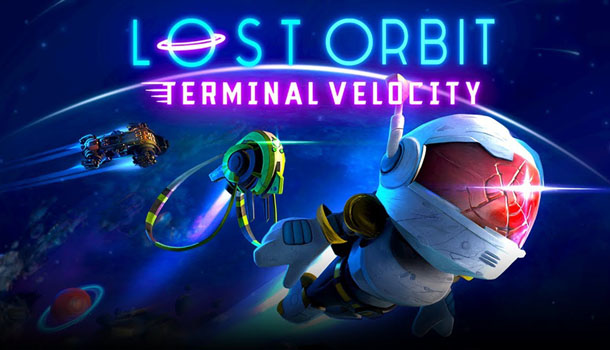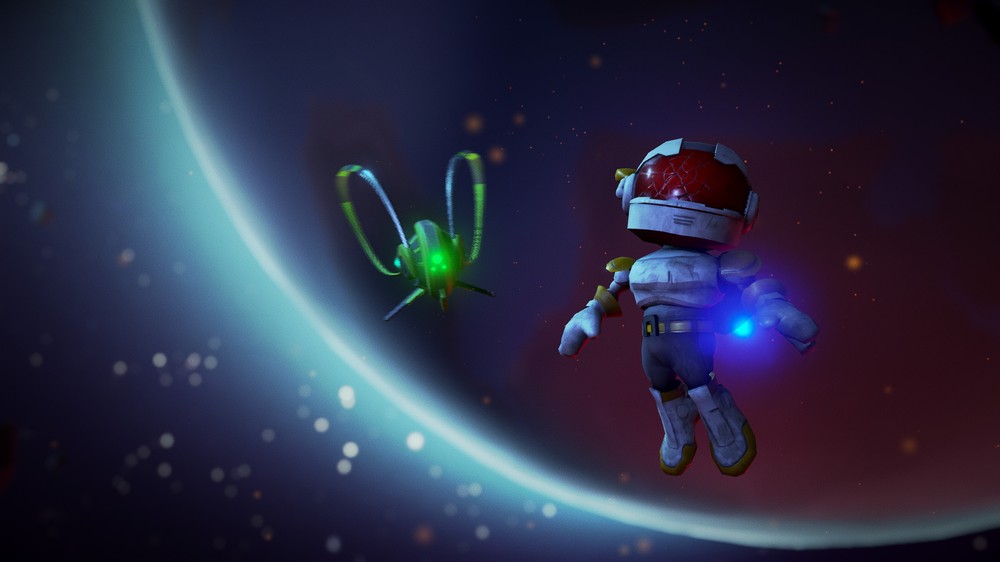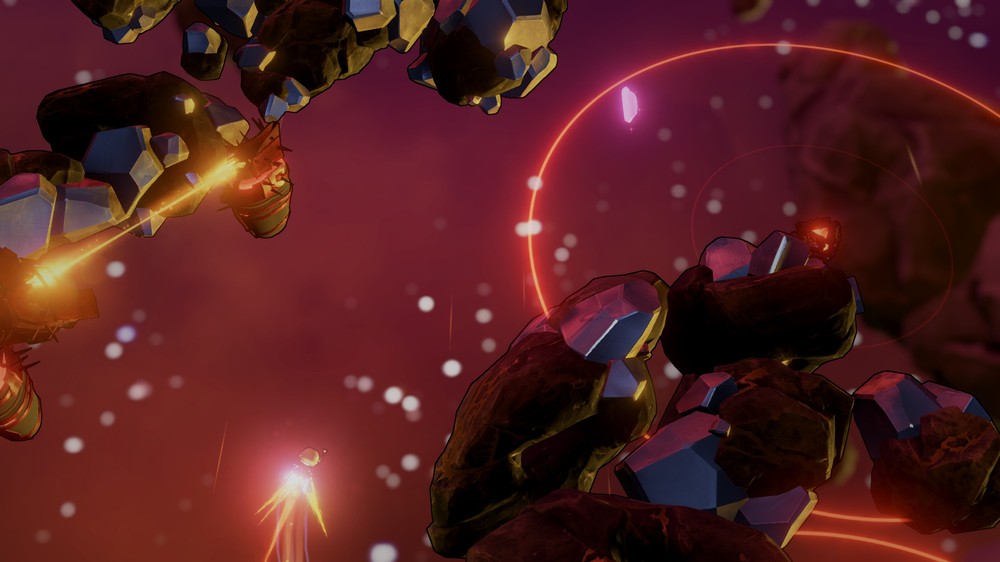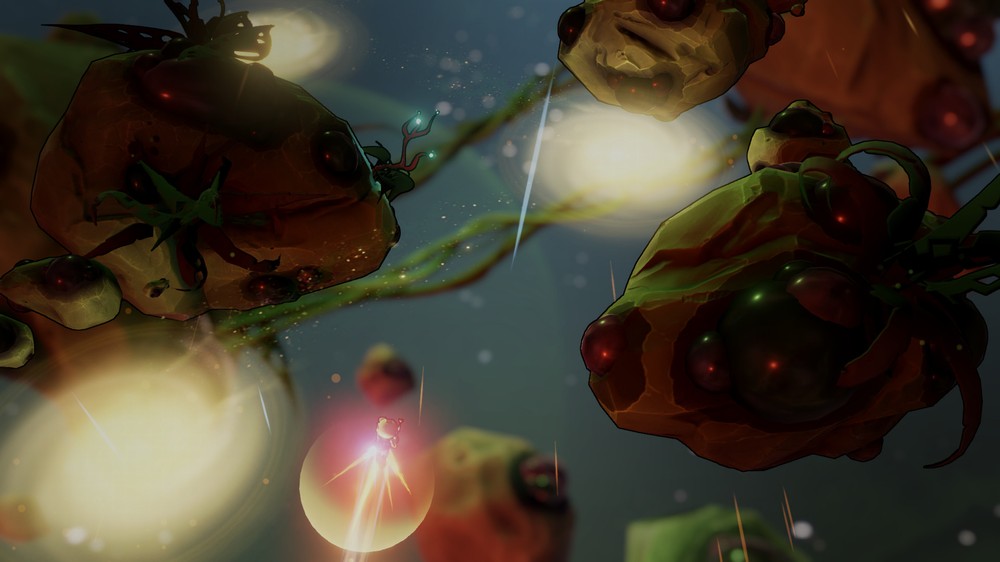LOST ORBIT: Terminal Velocity has finally released for PC and console and I can finally talk about this amazing game that has literally consumed all of my free time for the past few weeks. I had the pleasure of playing Lost Orbit on both PC and Xbox One and will discuss both in this review although the majority of my time was spent playing on PC with only an hour or so spent on Xbox One purely to make some quality comparisons for gameplay, graphics, and controls, which it turns out weren’t all that different. It’s worth noting that Lost Orbit has been around since 2015 on PC and Terminal Velocity is the definitive version upgrade with improved graphics, more levels, more story content, and all sorts of gruesomely humorous ways to die. This new version also marks the debut of Lost Orbit for Xbox One and Switch.
Somehow I managed to miss this delightful action game when it released in 2015 so all of the “new” content is pretty much lost on me, but those who did play the original will find new game mechanics like rail grinding, asteroid drilling, and the ability to dodge mines and traps and tactically smashing into explosives to send them flying into space pirates or other obstacles in your path. Terminal Velocity also adds in new content including a new solar system with 12 new story levels, fun new missions and objectives, a stealth missions in a space mine, and an intense chase sequence with a pirate boss. In all, there are 50 levels spread across five unique and gorgeous systems and 15 challenge levels that will test all your skills.
 Lost Orbit has a cool premise with you playing as Harrison, this tiny astronaut who is stranded in space after his ship explodes while he was out on a space-walk repair mission. Now he must jetpack his way across the galaxy to find his way home. On the surface the game appears to be a scrolling shoot ’em up until you realize there isn’t much shooting going on. Lost Orbit is more of an exploration game designed around collectibles, mastering level designs, and replaying those levels in order to master the three elements that fuel your scores, medals, and leaderboard rankings. And with most levels lasting only a few minutes Lost Orbit clearly falls into the arcade category of gaming.
Lost Orbit has a cool premise with you playing as Harrison, this tiny astronaut who is stranded in space after his ship explodes while he was out on a space-walk repair mission. Now he must jetpack his way across the galaxy to find his way home. On the surface the game appears to be a scrolling shoot ’em up until you realize there isn’t much shooting going on. Lost Orbit is more of an exploration game designed around collectibles, mastering level designs, and replaying those levels in order to master the three elements that fuel your scores, medals, and leaderboard rankings. And with most levels lasting only a few minutes Lost Orbit clearly falls into the arcade category of gaming.
Each level is populated with a set number of purple crystals that dictate your path through increasingly complicated and deadly level designs where you need to dodge asteroids, space debris, mining equipment, and even space pirates. The game rewards speed but speed comes at a risk, so you are always flying on the edge of your seat finding those perfect moments to kick in the afterburners. One of the most interesting design elements is the way the game makes expert use of edge-warping, so if you exit one side of the screen you appear on the other, making for these great opportunities where you have to tactically predict and plot your course moving forward by weaving in and out of both sides of the screen, not only to collect the shards but often to avoid dead ends and death.
 Other cool elements include celestial bodies with orbital rings that you can steer into and then spin around at high speed before launching out of orbit in the direction you want. These rings will often have crystals in them. Another space anomaly will send you Ping-Ponging from one node to another at dangerous speeds which can help with your overall score. Each level is ranked from bronze to platinum based on your finishing time, crystals collected, and how many times you died. This arcade-style scoring system greatly adds to the replayability of the game, triggering that “just one more try” attitude.
Other cool elements include celestial bodies with orbital rings that you can steer into and then spin around at high speed before launching out of orbit in the direction you want. These rings will often have crystals in them. Another space anomaly will send you Ping-Ponging from one node to another at dangerous speeds which can help with your overall score. Each level is ranked from bronze to platinum based on your finishing time, crystals collected, and how many times you died. This arcade-style scoring system greatly adds to the replayability of the game, triggering that “just one more try” attitude.
LOST ORBIT: Terminal Velocity has a great upgrade system that allows you to upgrade Harrison’s jetpack and his ability to attract crystals from a distance, and even add new abilities like a barrel roll or even brakes so you can slow down when things start to get too crazy. These upgrades will certainly make getting platinum scores much easier in previous levels once you have them unlocked, so try not to obsess over any particular level until you have all the upgrades. The upgrade system also allows you a bit of control in how to tailor the various game mechanics to your own playstyle.
 The Terminal Velocity update definitely enhances the graphics from the original with stunning 4K visuals and smooth 60fps gameplay on the PC. The Xbox One version looks fantastic, maybe not quite as crisp as the PC version, but still awfully pretty despite not having any enhanced or HDR support. The PC version isn’t very demanding and scales nicely with whatever hardware you have to throw at it. The game is designed for a controller and with that in mind plays identically between Xbox and PC. Controls are intuitive with a nice analog steering, boost button and super-boost with new abilities getting added to other buttons. There is a small learning curve in learning how to time your exits from orbit so you don’t launch yourself into an asteroid. You also have to remember to enter orbit at normal speed or you’ll just plant yourself neck-deep in a planet. Oh yeah, this game has some hilariously dark death sequences – probably why it got the Teen rating.
The Terminal Velocity update definitely enhances the graphics from the original with stunning 4K visuals and smooth 60fps gameplay on the PC. The Xbox One version looks fantastic, maybe not quite as crisp as the PC version, but still awfully pretty despite not having any enhanced or HDR support. The PC version isn’t very demanding and scales nicely with whatever hardware you have to throw at it. The game is designed for a controller and with that in mind plays identically between Xbox and PC. Controls are intuitive with a nice analog steering, boost button and super-boost with new abilities getting added to other buttons. There is a small learning curve in learning how to time your exits from orbit so you don’t launch yourself into an asteroid. You also have to remember to enter orbit at normal speed or you’ll just plant yourself neck-deep in a planet. Oh yeah, this game has some hilariously dark death sequences – probably why it got the Teen rating.
The sound design for LOST ORBIT: Terminal Velocity is just outstanding with a fantastic soundtrack covering a wide range of emotions from haunting loneliness as you explore the levels to this celebratory theme as you rocket toward the scoreboards at the end. Sound effects are excellent and when it comes to dying you can’t help but laugh when Harrison splats into a rock and his space ghost swirls away with a haunting howl. But the single best audio feature is the narration. Not since Bastion have I enjoyed having the story played out with some expert voice acting that not only communicates the story beats but also fuels the emotion of the gameplay. Admittedly, in a game that is designed around repetitive grinding for better scores, you might get annoyed with future retellings of the story but that’s what the audio options are for.
As I sit here trying to figure out if I am really going to score this a perfect 5-stars I simply can’t think of a reason not to. The game is only $10 and offers so much quality gameplay, even if you only play each level once. But the competitive nature of the design versus others and even against yourself, trying to best previous scores is undeniable, and the quest for platinum awards for all levels in the game is a task that could easily take you into 2020 and beyond. The relatively short levels designs make this a great game to pick-up and play when you only have pockets of free time, making this an easy recommendation for the Switch even though I haven’t personally played that version. Basically, you just need to play LOST ORBIT: Terminal Velocity on whatever system you have because it is gorgeous, challenging, addictive, and a tremendous value when it comes to content versus cost.

















